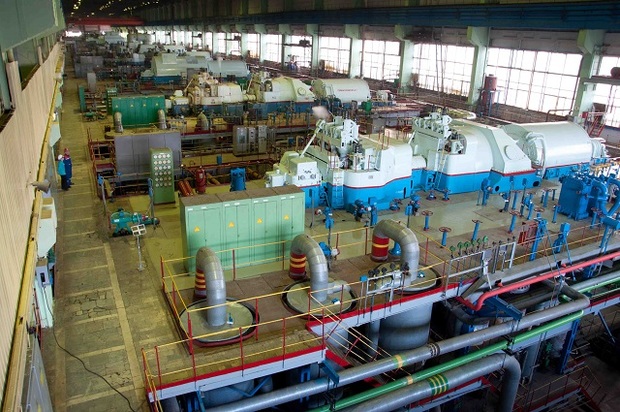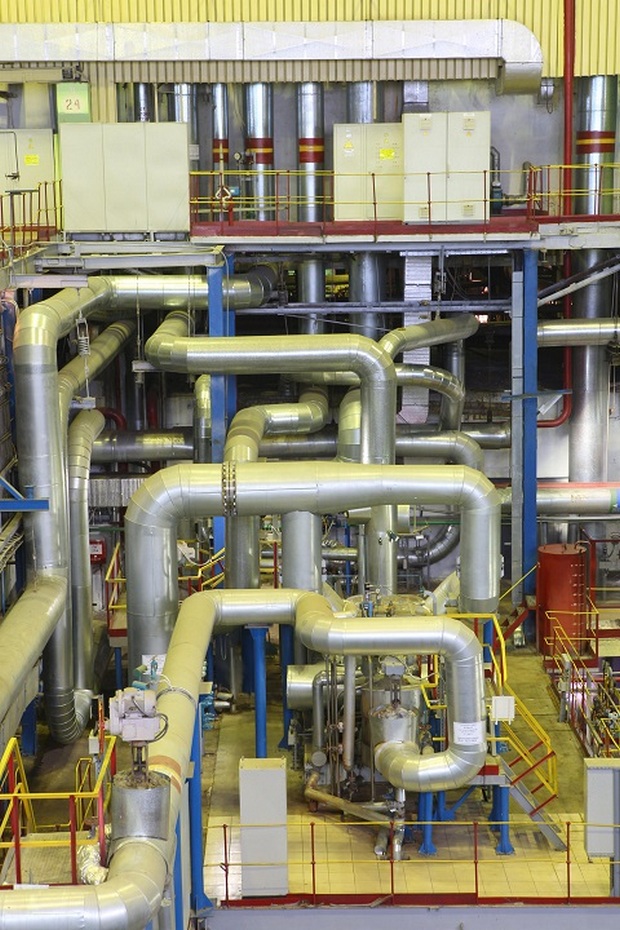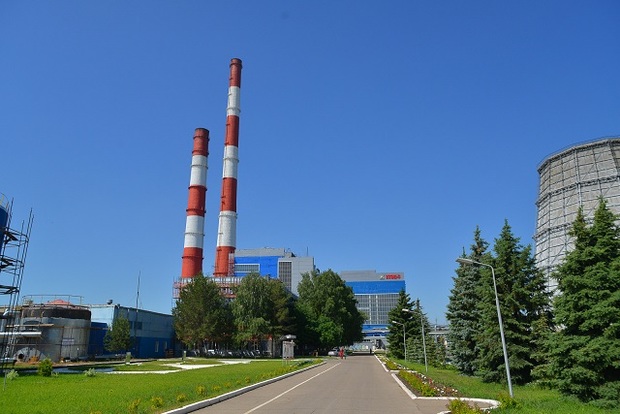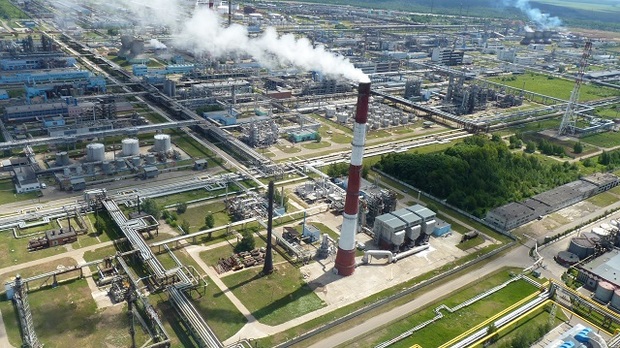Ramil Khusainov, TGC-16: Sector comes close to psychological threshold of 50 billion rubles of total debt in the energy market
Having united the Nizhnekamsk CHP Plant-1 and Kazan CHP Plant-3 five years ago, a new energy company, TGC-16 PJSC, appeared. For this time, the enterprise consolidated its positions in the energy system of the republic occupying 43,3% of the installed heat and 18,4% of the electrical power of Tatarstan. In the interview with Realnoe Vremya Ramil Khusainov, the director general of TGC-16, comments the results of the enterprise, technical and technological transformations, reasons of accumulated debts in the energy market and many other facts.
Impressive results
Mr Khusainov, to start with, TGC-16 was created to increase the competitiveness of the main power-consuming enterprises of TAIF by means of cuts in expenses on energy resources cost of their products first. Did you manage to solve the problem?
Our results are impressive, and the figures prove it. Nowadays the installed capacity of electrical power of generating units of TGC-16 is 1,264 MW and the installed heat capacity reaches 5,681 MW. We are leaders of heat production in the republic; we occupy more than a half of the heat energy market among generating companies because we have most possibilities on heat and electricity generation in combined mode.
The capacity reports on heat and electricity indicators annually grow making a significant contribution to the reduction of the gap between electricity consumption in the republic and electricity production by the generating companies of Tatarstan.
What is more, the work on energy effectiveness and reduction of fuel costs is constantly held in the factory, which together with optimization of productive capacity loads strengthens a competitive advantage of TGC-16 during the sale of energy products on the energy wholesale market.
What results did you achieve regarding the fuel economy?
According to last year's results, specific reference fuel consumption for electricity supply was equal to 281,6 g/kWh. This indicator of fuel costs per article allows TGC-16 to be the leader among generating companies of the Republic of Tatarstan being in the 5 top companies of Russia. And for 5 years, specific energy consumption for their own needs for electricity generation reduced from 4,9% to 4,16% and for heat energy supply – from 24,8 kWh/Gcal to 23,1 kWh/Gcal.

How does the company achieve such results?
These indicators were reached due to the realization of projects within the scope of the strategy for energy conservation or, more precisely, because of the implementation of variable-frequency drives, substitution of feed pumps for turbine drive and the modernization of the regenerative airheaters of furnaces. Last year in the Kazan CHPP-3 a large project on modernization of the flow diagram of the station was completed.
As a result, the systematic work in the sphere of energy conservation and ramp-up of energy efficiency enabled TGC-16 to obtain tariffs cuts in heat energy in 2011-2012 and preserve it at the same level in 2014.
5 billion rubles for modernization in 2015
TGC-16 is actively modernizing its Combined Heat and Powers from the beginning. At first, the sum was 15bn rubles. Has the price changed? How much has been spent already?
Since 2010, the total sum on modernization and renewal of the Nizhnekamsk CHPP-1 and Kazan CHPP-3 has been over 9bn rubles. And it is necessary to mention that costs during the realization of investment programme annually grew.
What projects do you have in 2015?
This year we plan to realize 12 projects at over 5 billion rubles, 4,9bn of them will be invested in a new construction, 339m rubles in the technical rearmament, reconstruction and modernization, whereas 37m rubles will be expended on the purchase of fixed assets.
Looking ahead, I can say that the investment programme of TGC-16 for 2016-2018 includes 75 events that come to 12,704 million rubles in total.

Could you go into details concerning the main technological innovations that were installed at the stations?
Last year we installed lower-power turbines or turbo drives into flow diagrams of the stations. Their advantage is that they provide a reduction in feed pumps electricity consumption that enabled to increase heat output ratio, which is equal to an expensive reconstruction of a turbine. One turbo drive was put into operation in 2013 in the Nizhnekamsk CHPP-1, consequently, electricity consumption for their own needs reduced. At the end of 2014 electric drives were substituted with two turbine drives in the Kazan CHPP-3, where we also modernized a steam turbine with the transition to the performance of exhaust steam due to which we could use the reconstructed turbine as a bottom one.
The key event for TGC-16 and for the TAIF Group of Companies was in 2014 when there was signed a contract on the modernization of the Kazan CHPP-3 based on a gas-turbine plant. It presupposes a turnkey construction of a new block whose energy 'heart' was innovative gas turbine of 388,6 MW.
At what stage is the construction now?
Nowadays the main equipment and most of the auxiliary equipment are in the process of production in factories. Our experts always control the production of the equipment during the tours of inspections. The principal volume of equipment delivery to the building area is planned for this autumn. The construction of temporary buildings and installations and spadework are completed.
What advantages does this installation have?
It will enable to boost electricity production in combined cycle in the Kazan CHPP-3, so the current power deficit in the energy area of Kazan will decrease, and energy workers will be able to provide a high reliability of the energy system, including during the FIFA World Cup in 2018.
This gas-turbine plant has a very high-energy conversion deficiency, a great degree of operational flexibility achieved by means of the innovative unit control level that, in turn, enables to start up the plant and shift to partial load preserving high-efficiency indicators. And the combustion chamber of low emission will allow the Kazan CHPP-3 to provide low, compared to the permissible level, indexes of discharges to the environment. Another advantage of the new equipment is a four-stage air-cooled turbine whose first row of blades is made of monocrystals.
What is the price of this large-scale project?
The project is estimated at 16,4bn rubles, according to the forecasted price of the euro.

United Heat Supplier
At the end of April TGC-16 was granted a status of United Heating Supply Company in Kazan. How did this status influence the energy company? How is the heating scheme functioning now?
Today's heat energy of Russia looks like a yarn of unsolved problems that prevents enterprises from developing, generates a lot of complaints concerning the quality of service, and tangibly makes a hole in consumers' pockets because they pay constantly growing bills for cold and hot water. It is obvious that there is a necessity to change the system of relationships and the pricing model. And the first step ought to be a creation a United Heat Supplying Company.
The heat-supplying scheme of Kazan was approved by the Ministry of Energy of the Russian Federation on 13 March 2015. This document delimits the responsibilities of heating supply companies and foresees long-term perspectives of heating system development. According to the order of the Ministry of Energy, TGC-16 was granted a status of the United Heating Organization. Now it is a United Heat Supplying Company in this area.
What does this status commit?
United Heat Supplying Company is the main element in the relationships in heat supplying. It is a producer, buyer, and vendor of heat energy on a certain territory that provides any consumer with heating. It is a united centre responsible for reliable and high-quality heat supplying. There are some criteria in order to obtain the status of United Heating Supply Company for heat supplying organizations. First of all, it is a title deed or another legal foundation that proves the ownership of heat energy sources: stations, boiler or heat networks, which will provide the best quality of heating resources. TGC-16 corresponds to these criteria in full measure: it has the Kazan CHPP-3 whose tariff on heat energy in combined cycle is the lowest in Kazan.
Having obtained the status, we, firstly, should estimate conditions under which we will work, development perspectives, possibility and financial sources of investment projects, which are designed to increase the efficiency of the heating supply system of the city and reduce consumers' expenses. We already maintain contractual relationships with most part of the consumers in our area.
TGC-16, as this status owner, will have to launch a contracting campaign: to sign contracts on delivery with new consumers and organize transmission of heat. The matter concerns signing of agreements with new consumers and heat distribution network. The company plans to finish this work till the 2015-2016 heating season.

'We work with debtors on all fronts'
Recently debt matters have been thrown into sharp relief in the energy market. At the beginning of April, Vyacheslav Kravchenko, the deputy chief of staff of the Russian Ministry of Energy, stated that in the wholesale market debts reached 50bn rubles. How do matters stand with debtors in TGC-16?
Debt matters in the wholesale electricity market have been existing for a long time. There was a constant accumulation of consumers' debts to suppliers and network organizations from the start of the bidding in the electricity market till 2013. Both imperfections of the legislation and weak control exerted by infrastructural organizations are the principal reasons of these debt matters. A mass bankruptcy of power supply companies, controlled by the Energostream Group of Companies, was a sensational event. There are cases of single bankruptcies of other companies because of accumulated debts. The inertia of the wholesale market system doesn't allow to detect problematic companies in time concerning insolvency and insufficient availability of energy suppliers' fixed assets to satisfy creditors' requirements only worsens the situation. Some events were held in order to cope with the problem of insolvency in 2013: a part of energy supplying companies was deprived of their status of the electricity market and the system of financial guarantees. But these partial measures didn't lead to debt reduction, they only maintained multibillion debts at the same level. In 2015, energy development came close to the psychological threshold of debts equal to 50bn rubles. The crisis in the country and line of the trend let us think that this mark will be overcome and that debt matter is still present.
TGC-16 has an elaborated and smoothly running system of claim-related work. The work with debtors is carried out from making a claim to the bankruptcy of indebted enterprises. The system proved its effectiveness: increase of contract debts, agreements signed in the electricity market was stopped, and debts will reduce with the completion of the work. Anyway, a qualitative leap in the struggle with debtors is possible after a comprehensive analysis and modification of legislative rules, formation of qualitative control and observation of payment discipline.
Mr.Khusainov, how could you characterize the 2014-2015 heating season for 'TGC-16'?
This winter we had not extreme temperatures, though the average temperature was lower in comparison with the previous years. A big amount of work done by the company on the eve of the autumn-winter season allowed us to pass it without incidents. For instance, from September 2014 to May 2015, the Nizhnekamsk CHPP-1 generated over 1,950 million Gcal for heating and hot water supply and the Kazan CHPP-3 – over 1,700 million Gcal. The total heat supply made 10,9 million Gcal in the CHPP-1 and 3,3 million Gcal in the CHPP-3.

'Invariable goals'
Could you point out the principal achievements of the company drawing conclusions for 5 years of work in the energy market?
I think that for this period the company not only became a reliable and honest electricity supplier but also a recognizable brand. High-class technological systems appeared; they embrace all spheres of revenue metering, telemeters, and communications that correspond to the requirements of the wholesale market. As for management accounting and control, we arranged relationships with more than 260 contractors of the wholesale market, gained instructive experience in participation in Exchange Trading, and created an effective system of claim-related work.
What goals do you set for yourself and your team for the foreseeable future?
Our goals are invariable: we were summoned to meet growing demands of the enterprises of the TAIF GC for energy products, supply reliable and fail-safe energy supply for all consumers, work stably and increase the effectiveness of energy supply enterprises conserving stable and reasonable prices for heat energy.